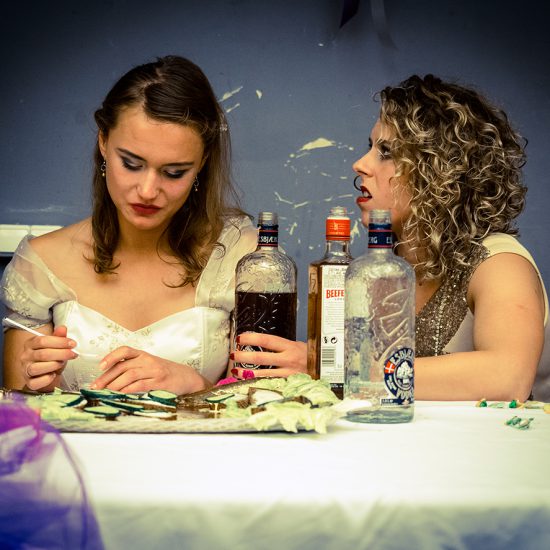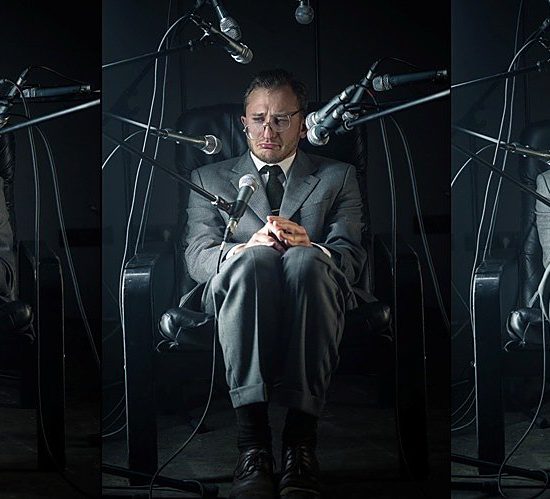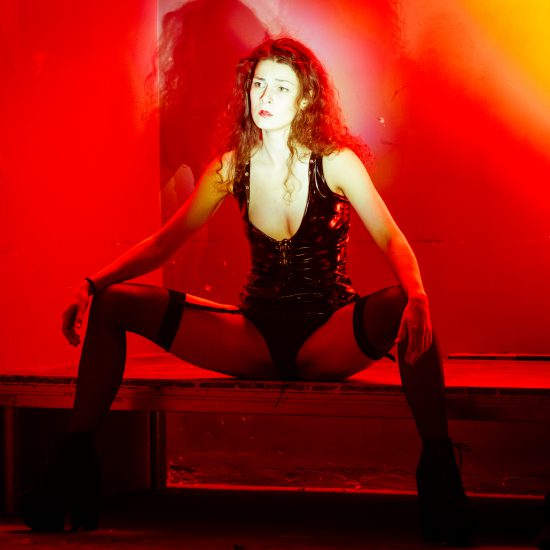Clean copy of “Oedipus Rex”
Performance “Oedipus Rex” indeed is controversial, disconcerting, breaking the stereotypes of the Antique tragedy’s staging (if on the whole today there is something left to break) and at the same time bearing testimony to the classic genre’s and its problem’s apprehension. In his previous works Korsunovas was successively moving towards this. We may recognize dotted lines of such Sophocles tragedy’s interpretation from the very first director’s performances according to D.Kharms and A.Vvedensky to the staging of the contemporary dramaturgy. “Oedipus Rex” is probably the most conceptually clean and capacious manifestation of Oskaras Korsunovas theatre.
This performance is the director’s answer to the question how the Antique tragedy could be grasped in our century, then the collisions of tragic Antique mythology signifies nothing except the respect, and then they are suppressed by something which is far from being called tragedy of heroic “apocalypse of our days”. In this context revived Antique tragedy turns into melodrama. […] Korsunovas realizes such danger and chooses other way to understand it.
Paradox always was characteristic to the director’s way of thinking. In this performance paradox gains particular significance: it is the clue of Sophocles’ tragedy’s interpretation and the hyperbolized implement of art. Whole performance is based on the paradoxical antithesis between naivety, ridiculousness and horror or tragedy, which illustratively demonstrates that between those ones distance is made by only one step. Such grotesque implement was used in the previous Korsunovas’ performances as well. The only difference that in “Oedipus Rex” probably the first time it reveals so successively motivated and so illustrative expresses the tragic collision.
Obviously, the parallel between Oedipus and playing kid (as well as “playing man”) that has no awareness why he was punished doesn’t create the tragedy by itself. Still, he has the naivety – highly important component of the tragic world outlook. Such naivety once was called by Nietzsche as “manifestation of the Apollonian culture”, that sets oneself “to total devotion to the charm of illusion”. The philosopher perceived its roots in the world of dreams and giddiness. Right here we may trace the Korsunovas’ interpretation of “Oedipus Rex” that starts from the fear of the childish dream. The performance introduces the mythology through world of dream. At the beginning it is “horizontal”, it explicates the signs of contemporary infantile mass culture, the signs that describes prime situation of Oedipus. Right away it is actualized while the infantile pose of Oedipus as the savior of the nation is quizzed. However, this infantile covers the horror. That toy world with its fairy-tail’s characters, those have appropriated the lyrics of Antique Chorus and Coryphaeus seems like the hypertrophied grotesque mask. Oedipus performed by Dainius Gavenonis is the only one who communicates with it. As if such mask were the part of his life.
That is how Korsunovas overcomes the danger of melodramatics. The relation between the ridiculousness and the apprehensions doesn’t claim any psychological motivation; it simply exists as the constant of the world that, according to Susan Sontag’s “Death of the Tragedy”, embodies not something like “fixed values”, but the “brutal vacuum” leveled against human being. From here rises “the nihilistic world’s vision” of tragedy. That is the vision presented in Korsunovas’ performance. It is expressed by stenography – the construction of childish play yard that may be both: playful and horrible (stenographer Jurate Paulekaite). While the action is developing this playfulness vanishes and that stenography becomes the threatening equivalent of monumental Antique architecture. Such transformation is realized by the frontage of Acropolis, which once appeared like a toy and buried in a sandbox later turns into gigantic building that towers in the depth of the stage.
By trying to avoid melodramatics Korsunovas doesn’t emphasizes the plot of Oedipus and Iocasta. This subject is distantly represented in the performance. Iocasta performed by Jurate Onaityte expresses rather maternity than femininity in general. […] The femininity in Korsunovas’ performance isn’t individualized; it exists as the Dionysian origin. Therefore not by accident its fury gets some taste of the travesty then the female chorus shows up with the Mike Mouse’s masks.
Both: at the beginning and in the end Oedipus of Dainius Gavenonis is lonely. But what a great difference between those two solitudes! It is the same as between the plastic Mike Mouse mask and the tragic elderly face of Shepard performed by Laimonas Noreika who from the very beginning of the performance sits in foreground. Between these two appearances lies the whole amplitude of performance’s meanings and implements of its expression. Silently from the foreground looking at the audience Noreika exists in the performance not only as particular character. Without saying anything he describes the story of Oedipus. Though this his function becomes clearer while the prime signs of infantile mythology are getting chapped then Oedipus’ efforts to elucidate his real origin starts to ruin the myth of child-ruler. Grotesque starts to be shifted with the tragedy and the “horizontal” mythology – with the “vertical” myth of tragedy.
[…]
One of the most marvelous scenes of “Oedipus Rex” represents the knowledge as the gulf then Oedipus “flows” on the brink of the lifted swing as if he was hanging over the sky and the earth. “I may call myself son of the fortune. The months are my family. They make me tiny and great” – silently with trembling voice whispers Gavenonis’ Oedipus confronted with gulf his own destiny. This act of the apprehension and the reconciliation is one of most marvelous blinks of Korsunovas’ theatre that lights up beyond the director’s favorite signal interpretation. In the very restrained and modest way this blink describes the brittleness and solitude of human existence.
The final mythological conclusion of Oedipus’ fate also raises not that much from the Antique masks or the stylization of the architectural elements than from the Dainius Gavenonis’ monologue-lamentation song. It witnesses the “birth of the tragedy from the spirit of music”.



